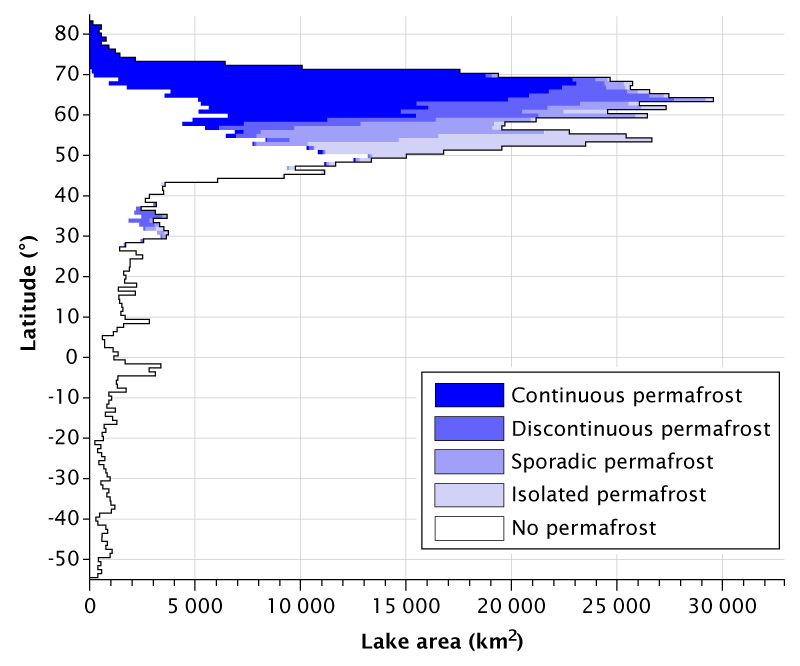Story Map »Thermokarst Lakes«: Slide 1
Abundance of Lakes
The Arctic has more lakes than anywhere else. According to the Global Lake and Wetland Database, about one quarter of the world's lakes are located in the northern high latitudes. In Figure 1, you can see the total lake area on the horizontal axis, divided into one-degree latitude increments (vertical axis). The peak in lake area in the region between roughly 50° and 70° north cannot be overlooked. This region is also where permafrost is present - the shades of blue indicate the fraction of lakes is found in different permafrost settings in that latitude.

Figure 1: Global lake area distribution (source: see last slide).
How do we know the global distribution of lakes? Satellite images tell us. For example, the European Commission's Joint Research Centre has analyzed more than 4 million Landsat satellite images to detect water bodies and produced a Global Surface Water Dataset. You can view this data on the map by clicking the button below. Visit the Global Surface Water Explorer website to learn more about how water distribution of water changes over time.
Online sources
Global Surface Water Explorer: https://global-surface-water.appspot.com/
Global Lakes and Wetlands Database: https://www.worldwildlife.org/pages/global-lakes-and-wetlands-database
